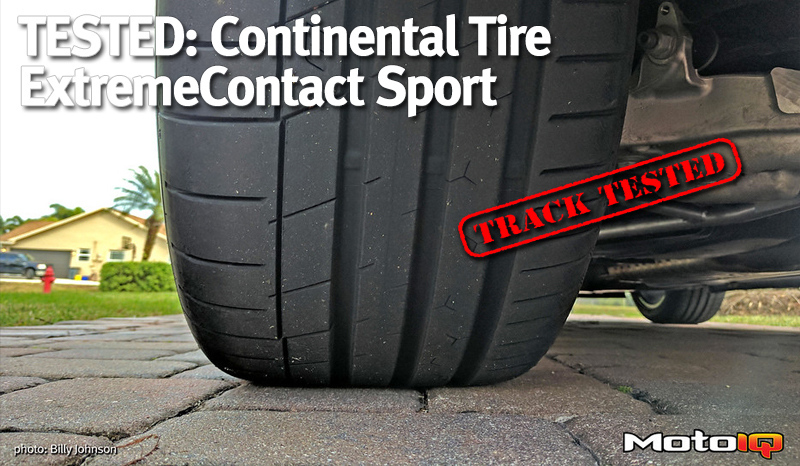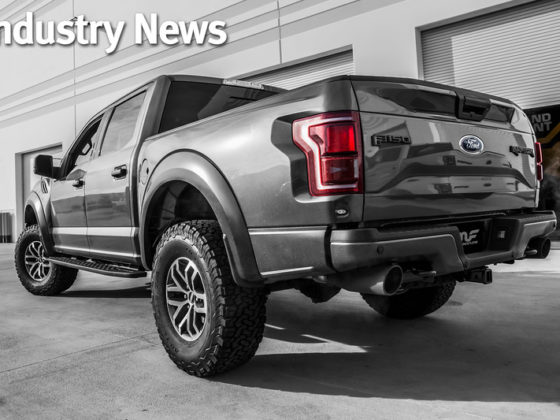
Even though it shares the same ExtremeContact™ family name, the new ExtremeContact™ Sport is new from the ground-up with a different tread design, tire compound, belt angle, and the addition of unique sipes and a new “Sport Sidewall Insert” to increase sidewall stiffness.

To help in the development of the ExtremeContact™ Sport Tire, Continental Tire called upon Three-time IMSA champion and five-time Rolex 24 Hour winner, Andy Lally; back-to-back, and reigning IMSA champion, Joao Barbosa; Continental Tire SportsCar Series champion and two-time World Challenge champion, Lawson Aschenbach; Rolex 24 Hour winner, Ozz Negri; and 24 Hour of Le Mans winner, Rolex 24 Hour winner and WEC champion, Ryan Dalziel.
By tapping into the vast experience of these racing superstars, Continental was able to engineer a tire to give the steering precision, communication, and grip that racers expect from a UHP tire. The level of detail and feedback that each driver gave, and the ability for the engineers to ride along and not only get immediate feedback of what the pros liked and didn’t like, but to feel and experience what the they were reporting was crucial for the development of a better tire.
Continental Tire – ExtremeContact™ Sport
For the first time in the company’s history, Continental Tire brought in five IMSA championship-winning racecar drivers to help in the development of the brand new ExtremeContact™ Sport tire. This Ultra-High Performance street tire is built for car enthusiasts and engineered for extreme grip in both dry and wet conditions. Continental’s SportPlus™ Technology provides precise handling and steering for maximum control while enhancing wet grip while providing excellent tread life.
The ExtremeContact™ Sport utilizes their latest “+Silane™” technology, a completely new compound from the outgoing DW. Everyone knows that Silica is a breakthrough technology that improves wet grip and it is now widespread across almost every tire manufacturer. But what you may not know is that increasing the silica content greatly increases tire wear (especially on track) since the bond between silica molecules is easily broken. Continental’s patented +Silane™ technology improves the bond between silica molecules and allows for a higher silica content in the compound to increase both wet and dry performance. Continental says this new compound is better in both the wet and the dry over the DW’s compound.

Compared to the DW, the Sport has larger outer tread blocks for better dry handling, grip, and durability while reducing the number of circumferential grooves. The very outer shoulder is not continuous like a PSS and there is a lateral groove that goes all the way to the inner channel every fourth tread block. If you look closely at the outer shoulder blocks and the outer rib, there’s a “stepped groove” (a design feature from the DW) every third tread block to further aid in the evacuation of water, noise reduction, and improves wet grip.
Large, rigid tread blocks improve dry performance and durability, while wide grooves improve aquaplaning resistance. There’s some tradeoff with the changes made to the new Sport tire but Continental felt it was worth it, especially since from their tests the Sport still leads the segment for aquaplaning resistance, even though it is not quite as good as the old DW.

Despite losing some aquaplaning resistance, Continental was able to improve the wet traction of the Sport by using these revolutionary Y-shaped sipes in the inner tread rib. These unique and complex sipes retain the stiffness of the continuous rib for dry grip and performance, while improving wet traction by allowing it to flex, deform, and bite into the road. This results in improved wet handling and grip as well as braking when compared to the DW.



